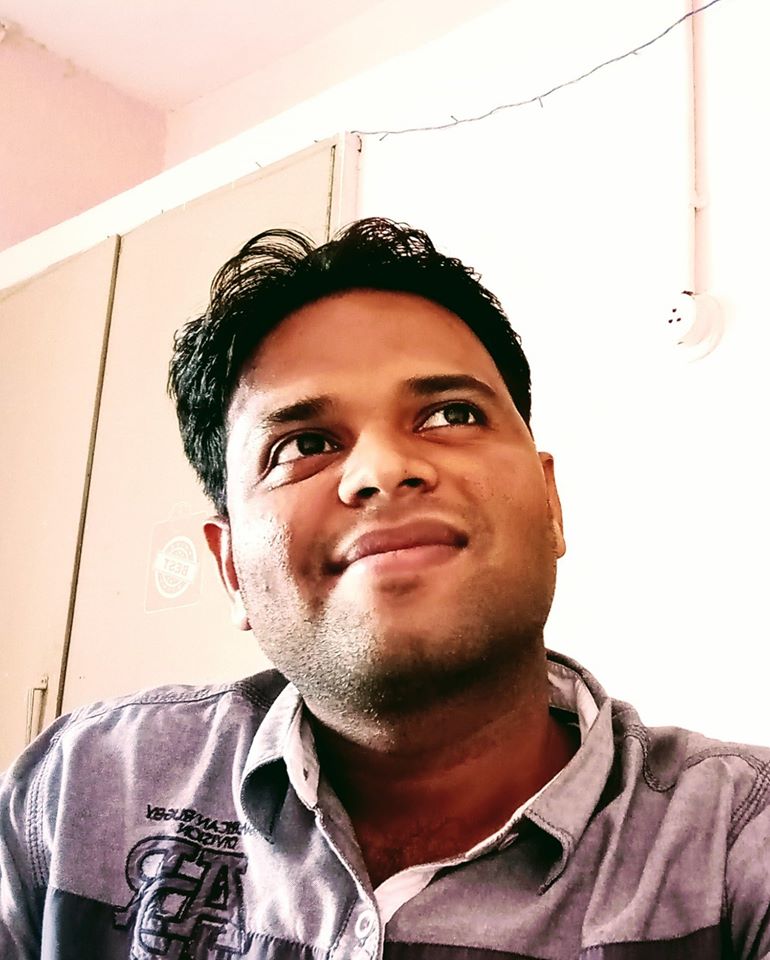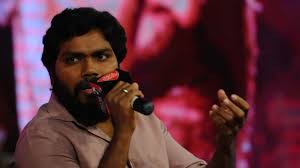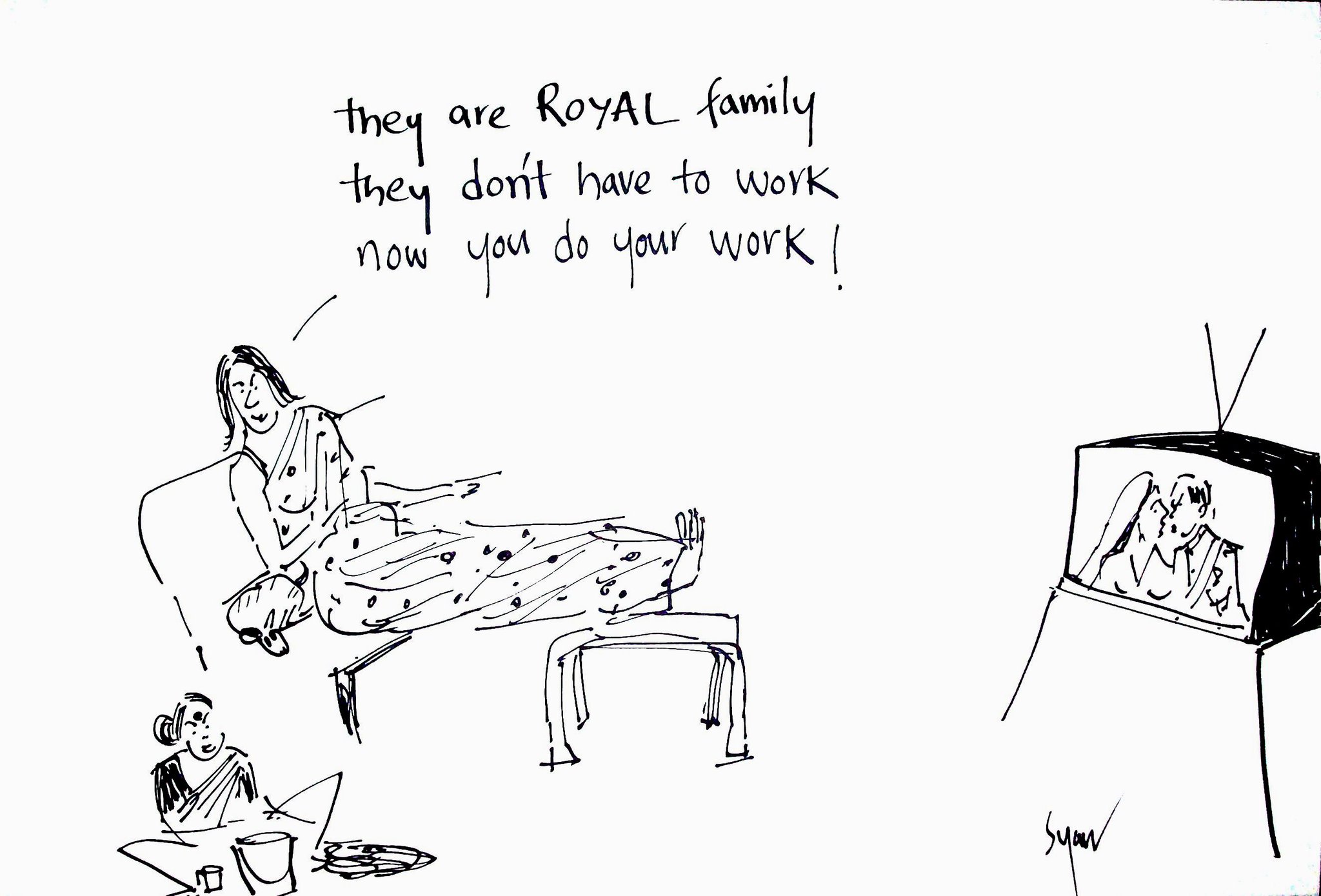Continued from here.
Ravi Chandran
As we saw earlier, beef was made an issue associated with only Muslims. Read the constituent assembly debate on banning cow slaughter–
Seth Govind Das in his speech he says:
…The Muslims should come forward to make it clear that their religion does not compulsorily enjoin on them the slaughter of the cow.[13]

Using beef to seclude Muslims
If we look at the Muslim rulers– such as Akbar, Aurangzeb, Humayun– all of them were against cow slaughter, but still the Hindu militants pointed at Muslims, and they continue to do the same now.
A few Muslim MPs participating in the debate said that the cow slaughter ban should be made a fundamental right, and gave their reasons too.
For instance, Mr. Z. H. Lari said:
…In my provinces on the occasion of the last Bakrid, so many orders under section 144 in various places, districts and cities. The consequence has been the arrests of many, molestation of the even more, and imprisonment of some…
Another Muslim MP did oppose the Hindutva argument but not many MPs supported his argument–
Syed Muhammad Sa’adulla:
….I personally found that droves of cattle were being taken to the military depots for being slaughtered not by Muslims, but by Hindus who had big “sikhas” on their heads. ..There are lakhs of Muslims who do not eat cow’s flesh. …It is the majority people who sold their cattle to the Muslims to be killed. Now the Muslims form only one-tenth of the population of the Dominion of India. Do you think that the Mussalmans can raise sufficient cattle to slaughter them? Muslims are poorer than our Hindu brethren. ..its wrong to say that the Muslims kill the cow either to offend my Hindu friends or for any other purpose…. Speaking of Assam, it is the hill people who are the worst culprits in this respect. In the town of Shillong, there is only one Muslim butcher against seventy from the hill people, who deal in beef. .
…there is a lurking suspicion in the minds of many that it is the Muslim people who are responsible for this slaughter of cows. That is absolutely wrong.
The above debate clearly shows the attempts to exclude the non-Muslims, like the Dalits, from among beef consumers. It was not the only campaign happening around or against Muslims, a number of others were also targeting Muslims. As a result the Muslim leaders who started out as staunch pan-Indian nationalists subsequently turned into separatists.[14]
At that point of time many movements which were against Brahmnical ideologies were not exactly for over-throwing the caste structure, but were rather articulating the demands of particular castes for a share in power. The Holeyas demanded to be treated better than the Brahmins on account of their better observance of pollution rules and thus challenged the existing social hierarchy[15]. During the 1880s, the Chandals developed the Matua cult, a de-Brahminized form of Vaishnavism, to develop widest possible caste cohesion, and renamed themselves Namasudras and claimed Brahminic origin[16]. Buddhism appeared as a counter-theological movement which took a moderate stand on culinary practices and allowed beef in the menus. It was primarily against Buddhism that the beef eating was abhorred and the cow was sanctified. However, many of the present Buddhists claim very ‘proudly’ that they don’t eat beef. Also, while the OU students were organizing the Beef festival, a few Dalit Buddhists vehemently opposed the move.
Hence such movements were also adopting Brahminical practices and did or spoke like the Brahmins, and beef has to be located in this context. Still there are a vast number of upper caste political parties, intellectuals, students, professors (please watch Prof. Kancha Ilaiah talk about the Indian left) who don’t feel agitated about curbing the ban on cow slaughter. It is students from upper caste backgrounds who vehemently opposed serving beef and pork in the recent festivals. I quote from the JNU Naga students’ forum pamphlet:
… none of the students’ unions that supposedly champion the cause of the minorities and the oppressed groups have given any consideration or support till today, except the newfound intellectual group ‘The New Materialists’ unearthed the issue from prejudiced politics of this campus…
In other words as Om Prakash Valmiki noted “..that the education imparted in schools and colleges did not make us secular but turned us into narrow-minded fundamentalist Hindus. p72′ This is being countered at least in few universities. The demand for beef and pork has to be seen in this context.
Now students like Mr. Sudarshan from OU, who was behind the OU Beef festival, are demanding that beef be introduced in Social Welfare hostels run by the government.
Pork is also a Hindutva weapon
Though the philosophy of Hindusim does not rest only on the cow, but the militant Hindu campaign on cow protection made it seem like it is built on the cow, which they saw as a weapon to seclude Muslims. Hence eating beef in public sphere threatens the very idea this Hindutva edifice has been built upon. Then what about pork?
Many say that pork or slaughtering of pig/swine is not banned but cow slaughter is banned so the two cannot be equated. For those who make such arguments, I only request all of them to look closely into the JNU beef and pork demand. Everyone says that the JNU administration is Brahmanical, if that is so why didn’t the administration allow pork in the North Eastern Dhaba? It could have easily said that due to the ban on cow slaughter in Delhi, we cannot allow beef but we can allow pork. But the administration did not allow this, does that mean the JNU administration is much concerned about Muslim sentiments?
A similar comment can be made on the Delhi High court judgment on banning both beef and pork. That should make all of us to delve deeper into the Indian state’s food policy itself.
Our left liberals allegedly have serious concerns over pork because they feel it could be used against Muslims.
We often read news about pork being thrown in mosques. Why is ‘pork’ chosen instead of the meat of any other animal? In the holy book of Quran it says eating pork is a sin, however in many Muslim countries eating pork has not been banned. People of other religions living there may eat it. Also, recently, a world renowned Islamic scholar and leader of the European Council for Fatwa and Reserach, Yusuf al-Qaradawi, ‘in a stunning reversal of a classical Islamic position, has announced that as of today, eating pork is no problem after all‘.
Another view from islaminteractive.info:
.. There is no doubt that Muslims abhor pork. But to ban the same in a multi-cultural context would amount to the breach of freedom that Islam extends to all religious communities (to the breach of autonomy that the Prophet instituted in Madina). Quran does not require us to impose its tenets on others. (There is no compulsion where the religion is concerned. Right guidance has become clearly distinct from error 2:256)..
It becomes clear that Muslims don’t have a problem with others eating pork, and they don’t ask others to stop eating it. Nevertheless the Hindutva activists use pork, time and again, to throw in mosques. This act has been widely used to instigate the Muslim population: check the regional newspapers on this issue. But whenever such acts happen, it’s only the representatives of the mosques who complain to the police station, and the community at large doesn’t react. Hence it’s very important to rethink how pork has been marked among all non-Muslims. Time and again the Muslims have expressed the view that they don’t have any problem with others eating pork. This underlines the serious need to disassociate pork from Muslims rather than making it ‘sacrosanct’. The left liberals should wake up from their Hindutva opium induced slumber and be a little more genuine in dealing with the Muslim and caste questions rather than paying only ‘token’ acknowledgement to Muslim and Dalit views.
Most importantly we should also remember that the Dalit population is being humiliated and considered low because of eating pork. At this point we should note that Muslim students in the University of Hyderabad supported pork being served in the recently held Keraleeyam festival[17]. Similarly, in JNU too the Muslim students supported the Beef and Pork festival. In the entire discussion we should remember that both beef and pork have been used by Hindutva only for their own communal politics. When OU students organized the beef festival, the ABVP members, in a live debate, asked: why don’t you serve pork? When UoH students wanted to serve pork in Keraleeyam, the same Hindutva oriented students supported serving chicken; and when JNU students went for beef and pork, the Hindutvavaadis did not have any argument apart from saying that it hurts their sentiments, and if the festival happens its repercussions would be too grave in Delhi.
If we stick to the above argument that pork will hurt someone’s sentiment, then we misread the entire programme of Hindutva. Let us look at the Indian state’s food policy until now to understand its larger purposes.
Indian food policy: Normalizing a vegetarian food culture
One of the main arguments the beef festival organizers in OU and in JNU is that malnutrition is due to banning or reducing the accessibility of high protein non-vegetarian food such as beef. The same view was echoed by Veena Shatrugna, former scientist in National Indian Nutrition. On food policy she says:
“….India, scientists have not thought about anything original. What are the new things India has offered the world after 1947? Nothing. We talk about ‘zero’ – in fact our contribution has been a big ‘zero’. There is nothing in science that we have offered to the world…” “…In the case of nutrition and food, people who have been deciding the food policies in this country invariably were upper caste scientists – be it MS Swaminathan, S Varadarajan or Gopalan.
Now these upper caste scientists, who have been controlling this area of science and policy, took it on themselves to decide what constitutes ‘Indian culture’ and ‘Indian diet’. So – if you look at the science and research in the country from the 50s, 60s and 70s, several things become obvious. We had the worst famine in the 1960s, very low food production and scientists did have a big challenge ahead. These group of scientists were tasked with the responsibility of tackling the severe food crisis.
The government had to consult them as they were the experts in their field. So the Vardharajan, Swaminathans and Gopalans sat together and planned for the country. But their mindset was also limited by the ‘curd rice’ tradition they themselves grew up in. The vegetarian food culture was the only culture upper caste scientists from southern India grew up in and were familiar with. They were, however, very good at their arithmetic. They could calculate the amount of per capita rice and pulses required for the population.
But their imagination did not extend beyond arithmetic to the lives of people. So when they drafted their plans, they did not want to talk much about pulses. There was no fish, no eggs, no meat, no beef, not even fruits in the diet they prescribed! If you look at the diet that is given in this government publication ‘Nutrition value of Indian foods,’ it is based purely on cereals – rice, wheat, millet, jawar, but not pulses.Their solution – Indians should get their calories from cereals.
Why cereals? Because Swaminathan’s area of expertise was cereals and that was what he could take care of – rice and wheat. As a result of this emphasis, government gave huge huge subsidies for rice and wheat. In fact big farmers – and capital formation did take place at that time – of Punjab, western UP and Andhra Pradesh got maximum amount of subsidy to grow cereals. No problem with that – but the PDS systems were set up and cereals got pumped into the market.
Now what does this mean for people? For one, pulse production started falling and today consumption of pulses is less than 30 gm. So pulses, which were a major source of protein, according to these very scientists, was not handled at all.
Protein is so important for us. Why do we need protein? To grow, for our muscles. But protein comes from eggs and animal fat. It could be chicken, mutton, beef or pork. Without adequate protein we have stunted growth. It is a very unfortunate situation, but we have to understand, that the body makes adjustments for poverty. In a poverty situation, we don’t immediately ask for food. Instead, the body adjusts, the body structure adjusts. Children just don’t grow, they do not gain any weight and the body makes all the adjustments to lack of food. After a time, the body starts crumbling and then is it labeled ‘starvation’ !
When OU students asked her: do they have any plans to introduce beef in state policy?
She replied forget beef, even egg they are not allowing. In Karnataka there was a demand to introduce egg in the midday meal (scheme). The state government went for a poll and 16,000 voted for egg, 10,000 voted for banana.The government decided to serve banana and not egg. Also she notes even introducing egg in Andhra Pradesh faced a lot of obstacles. ..even to give milk to children, the state talks about how will we transport, store etc. but we get milk in packets, tetra packtets etc but for poor people they say they don’t know how to give. And also this milk comes from the rural areas…
Even Binayak Sen, who had talked recently about malnutrition in India, says: ‘If the cow protection society say that if I eating beef would hurt their sentiment, don’t they recognize that while saying it hurts your sentiment, it simultaneously hurts mine?’.
Why don’t the liberals think along similar lines? And in this entire discussion the caste question gets diluted with someone’s ‘hurt’ sentiments. And for how long Dalits/Adivasis should bear the burden of upholding democratic values? Is it a necessary ritual to murder or suppress Dalit voice to uphold communal harmony? Such as murdering Dalits to keep our cities clean. Or taking away lands from Adivasis to make India grow or to give ‘power’ to India. Or raping Dalit/Adivasi women and leaving the culprits to rape more with the help of the judiciary.
Our food, our right
Enough is enough, we SC/ST/OBCs demand our food to be served in university messes. If left liberals are concerned about ‘beef’ then first let them introduce it in the menu in a few of their institutions, like in CSSS, CSDS, etc. And also their media: Frontline and other Hindu group publications write about revolutionaries in their papers: what do they serve in their staff canteens?
The Hindutva politics dwells in its culture, influencing and appropriating Dalit, OBC, Adivasi gods and forcing them to accept their brahminical god and their festivals– Vinayaka Chaturthi, Onam, Durga Pooja etc– as ‘national’ festivals. Though this culture has been attacked by Dalit bahujan intellectuals, but one factor, the food policy of the state, has not yet been touched, and students have started to address the domination of Hindutva mindset within the left and right. Let the ‘left’ or the progressive upper caste come forward to fight against the Indian food policy. Institutions such as CSDS (Center for Socially Developing Studies), Center for Studies in Social Sciences, and others should come forward and introduce beef in their mess. And let the Manuwadi voice, The Hindu, practice its theory first because they professedly write about revolutionary things but still maintain their Brahmanism in their facilities, whether in ACJ or in the Hindu office. Here, Malar writes in her blog ‘Writing Caste’ about her experience in the The Hindu‘s Chennai office:
… The normal-food eaters can’t eat their food in the canteen, because the smell of their non-Brahmin food is offensive to the nostrils of their twice-born colleagues. They can’t eat inside the reporting section’s room, without remarks along the lines of “Which walking, swimming, flying thing are you eating today?” Some twice-born colleagues would ask this same question practically every time one unfortunate normal-food eater opened her tiffin box in office. I would have given anything to hear our normal person to say, “What the fuck do you care, you eater of grass?”…
Last but not the least, Ms. Arundhati Roy who fights against the state violence in the Red Corridor, and is fighting for Kashmiris, doesn’t want to talk about beef, because she says it’s a sensitive issue. Which makes us realize that the Red Corridor and other issues are no more ‘sensitive’.
At times I feel I have grown up in a cruel and barbaric civilization.
Om Prakash Valimiki, in Joothan.
(This article would not have appeared without the support of Kuffir, and more importantly the beef organizers of Osmania University, Mr. Sudarshan, Rajesh, Stalin)
Please read the first part of this article here.
~
References
[13] CAD, Wednesday, 24th November 1948.
[14] Aloysius G, “Nationalism without a Nation in India” OUP Delhi, 2011, p 168 (must read book).
[15] Ibid p.61.
[16] Ibid p. 64.
[17] Majority of the students from Kerala don’t eat pork.
~~
Please read other related articles in Round Table India:
Unite and Fight for the Democratic Right to Choice of Food
Exactly whose sentiments are hurt by beef and pork?
The Politics of Food Culture: The Holy Cow and The Unholy Swine
Why Beef and Pork Food Festival at JNU?
Of Laws, Cows and People’s Mutinies: Will the beef ban in BJP-ruled states fuel a new Mutiny?
The Self-creation of the Brahmans
~~~
Cartoon by Unnamati Syama Sundar.










